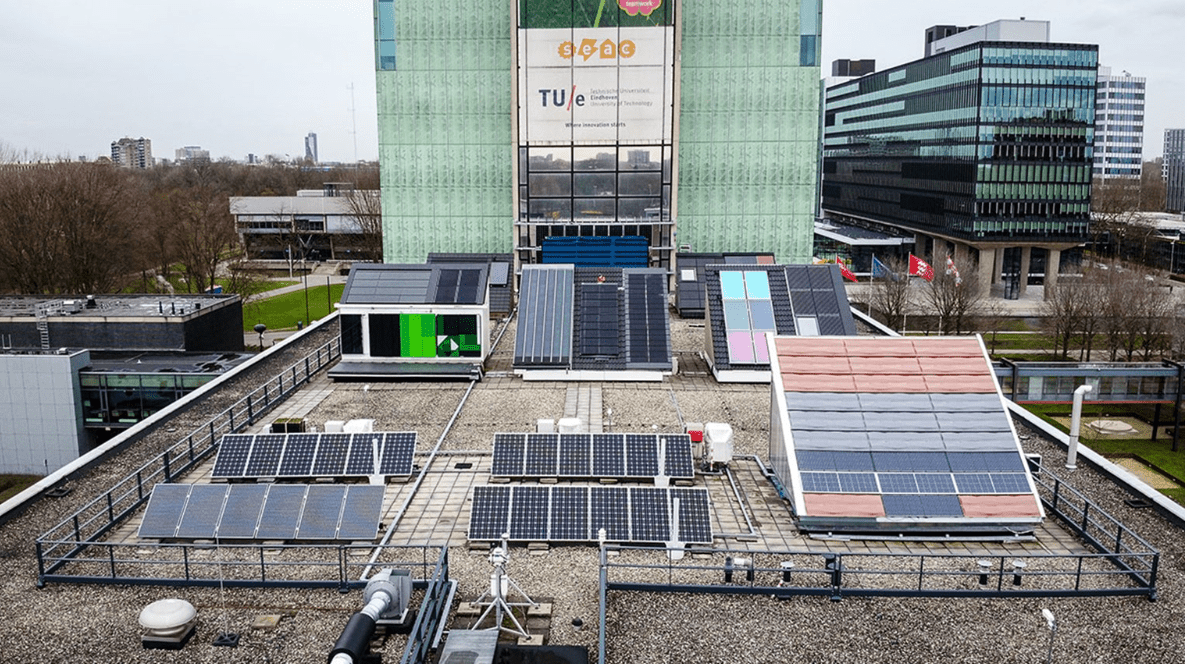
An electric car, heat pump, or robotic lawn mower: the world is electrifying, and so more and more roofs are full of solar panels. The Netherlands is even among the European leaders when it comes to generating solar energy. The need for efficient solar cells is therefore great. René Janssen, professor at TU/e, together with colleagues, has found a way to improve perovskite solar cells. A paper on the results of the research was recently published in the renowned journal Nature Energy.
Why you need to know this
Solar panels are playing an increasing role in our society. It is therefore important that they work as efficiently as possible. Scientific inventions, such as those by Professor Janssen and his colleagues, ensure this.
The demand for renewable energy is rising and so scientists are diligently looking for ways to make solar panels work better. However, regular solar cells, usually made of silicon, are reaching their physical limit. An efficiency of about 23 per cent seems to be the maximum achievable. So there must be a solution, thought René Janssen, professor of molecular materials and nanosystems at Eindhoven University of Technology. His research focuses on solar panels made of perovskite, which can operate more efficiently. These are in development, but there is room for further improvement.
First things first: Why is it actually necessary to further improve solar panels? “Firstly, because we have limited space on our roofs, while more and more electrical devices and systems are being added,” Janssen explains. “The better a solar panel works, the more solar energy you can generate.” In addition, the problem of limited space should be drawn more broadly, the professor believes. “More and more solar meadows are being added, while in the Netherlands we are already so limited in our space. We can save considerably on precious land area.”

The invention
Solar cells made of perovskite (a semiconductor salt composed of several elements) efficiently convert sunlight into electricity, the professor explains. The problem, however, is that they do not perform as well as they could in theory. So Janssen and his colleagues set out to investigate. And what turned out: different elements of the perovskite material in the solar cell do not mix perfectly with each other, resulting in lower efficiency. A problem the team of researchers from the universities of Toronto and Eindhoven managed to tackle together.
Janssen explains the finding in detail. Here’s the thing: a perovskite solar panel consists of several layers. One of those layers causes a lot of problems. “This is due to a mixture of two substances, bromide and iodide ions, that was not well distributed in the layer,” he says.
Now the scientists have found a way to distribute those two substances more evenly. They added a special chemical that not only improves the performance, but also the stability of the solar panel.
Follow-up steps
Before the solution can be applied in practice, however, there are a number of challenges to overcome. For example, Janssen questions the use of lead. “It is a toxic substance that you have to be very careful with. It can cause problems, for example when a panel breaks down or if it needs to be recycled. It also poses a drawback when solar panels end up in the environment. We are looking for an alternative.” Optimisation of solar cells is also necessary. By comparison, perovskite cells are already achieving similar efficiencies compared to regular silicon cells. With the application of Janssen and his colleagues, that will be higher. “With this invention, we are definitely taking a step in the right direction. But if we optimise further, we can achieve much more.”
But how exactly? “If we knew, we would have done it a long time ago,” the professor says with a laugh. “In any case, we need to make sure we reduce the mobility of the bromide and iodide ions in the solar cell. That mobility lowers the lifetime of the solar cell. That is possible if we start playing with the composition of perovskite.” Next time, the scientists will figure out the best approach. “Plenty of work to do,” the professor concludes.







